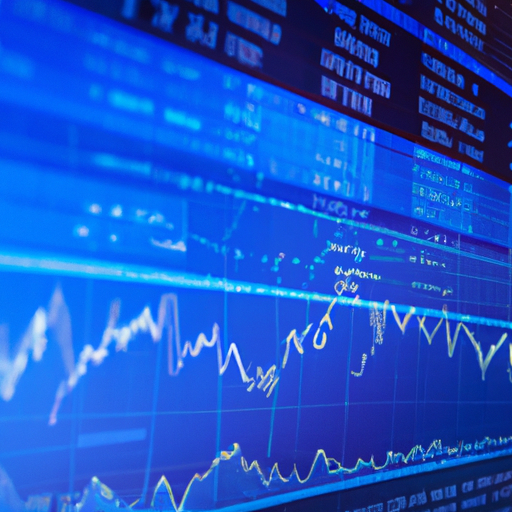Forex trading: a comprehensive guide for beginners
Forex trading, also known as foreign exchange trading, has become a popular way for individuals to engage in the financial markets. Whether you are a novice or an experienced trader, understanding the intricacies of forex trading is essential for success. In this blog post, we will delve into the world of forex trading, covering everything from its basics to advanced strategies.
What is forex trading?
Forex trading involves the exchange of one currency for another with the aim of making a profit. The forex market is the largest and most liquid financial market in the world, with daily trading volumes exceeding $6 trillion.
Unlike stock markets, which have physical locations like the new york stock exchange (nyse), forex trading takes place electronically over-the-counter (otc). This means that transactions occur directly between parties through computer networks.
The basics of currency pairs
In forex trading, currencies are traded in pairs. Each pair consists of a base currency and a quote currency. For example, in the eur/usd pair, eur is the base currency and usd is the quote currency.
The value of a currency pair represents how much of the quote currency is needed to buy one unit of the base currency. If eur/usd is quoted at 1.20, It means 1 euro equals 1.20 Us dollars.
Understanding these basics helps traders analyze and predict price movements effectively.
Why trade forex?
Flexibility: the forex market operates 24 hours a day, five days a week. This allows traders to participate at any time that suits their schedule.
Liquidity: with high liquidity comes less risk of price manipulation and more precise execution of trades.
Leverage: forex brokers offer leverage options that allow traders to control larger positions with smaller amounts of capital.
Real-life example: jane works a full-time job but wants to supplement her income through forex trading. Thanks to its flexible hours and high liquidity, she can trade before or after her workday without any issues.
Risks involved in forex trading
While there are numerous advantages to forex trading, it’s crucial to understand the risks involved:
High volatility: currency prices can fluctuate rapidly due to economic news or geopolitical events.
Leverage risks: while leverage can amplify profits, it can also magnify losses if not managed properly.
Psychological stress: the fast-paced nature of forex markets can be stressful for some traders.
To mitigate these risks, implementing effective risk management strategies such as setting stop-loss orders and using proper position sizing is essential.
Developing a trading strategy
Successful forex traders rely on well-thought-out strategies tailored to their individual goals and risk tolerance levels. Here are some popular strategies:
Technical analysis
Technical analysis involves studying past price movements and using technical indicators like moving averages or bollinger bands to predict future trends.
For instance:
John uses technical analysis by looking at historical price charts and applying indicators like rsi (relative strength index) before making his trades.
Fundamental analysis
Fundamental analysis focuses on evaluating economic indicators such as interest rates or gdp growth rates that influence currency values over time.
Example:
Sarah monitors economic reports from central banks around north america before deciding whether she should buy or sell specific currencies based on her findings.
Combining both technical and fundamental analyses often yields better results than relying solely on one approach alone!
The role of automated trading systems
Automated trading systems, also known as algorithmic or autotrading systems have gained popularity among modern-day traders due primarily because they help reduce emotional biases while executing trades automatically based upon pre-defined criteria set by users themselves!
For example:
Mike created an automated system which buys eur/usd whenever its 50-day moving average crosses above its 200-day moving average – thus eliminating human error entirely!
These systems offer several benefits including faster execution times reduced human errors & improved consistency across various market conditions!
However automated systems aren’t foolproof either; regular monitoring & adjustments may still be required ensure optimal performance under different scenarios!
Getting started with high-frequency trading (hft)
High-frequency trading (hft) involves executing large numbers short-term transactions within milliseconds seconds! Such rapid-fire techniques require sophisticated algorithms powerful computing resources but potentially yield significant returns due exploiting minute discrepancies between bid ask prices across multiple platforms simultaneously!
Example:
Anna employs hft techniques scalp tiny profits repeatedly throughout each session thereby compounding gains exponentially over time!
Bear mind though hft isn’t suitable everyone given inherent complexities associated technology infrastructure costs involved setting up maintaining such operations successfully long term basis!
Conclusion
Forex trading offers exciting opportunities those willing invest time effort learning mastering art science behind successful exchanges! From understanding basic concepts like currency pairs developing robust strategies employing advanced technologies such autotrading hft there’s always something new discover explore within dynamic ever-evolving landscape global finance today tomorrow alike!
So why wait? Dive into world possibilities start your journey towards becoming proficient profitable trader today!

